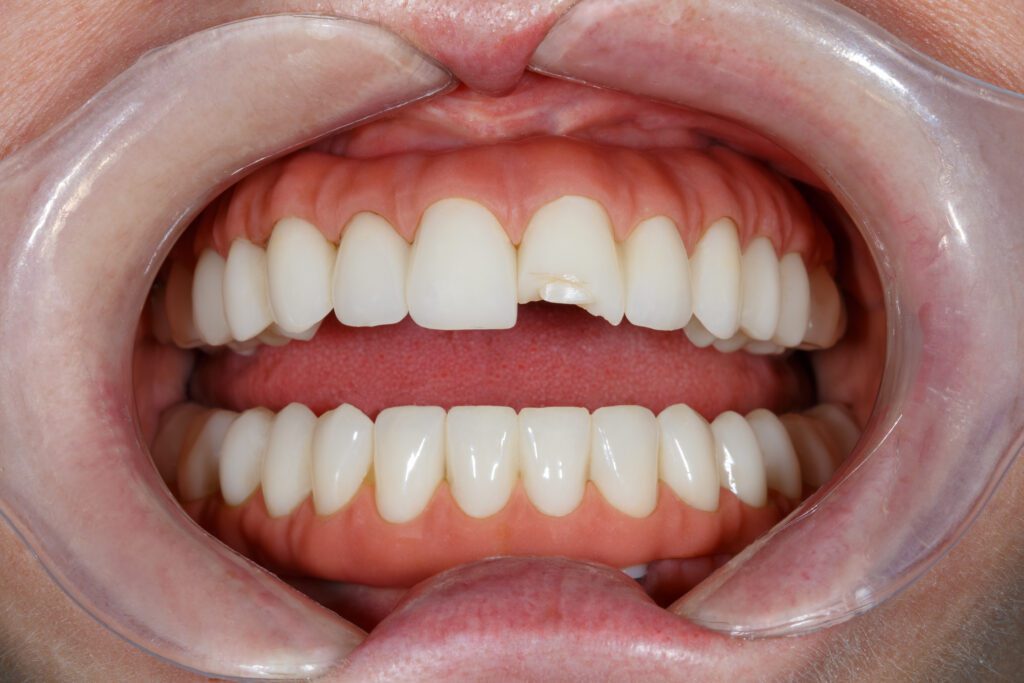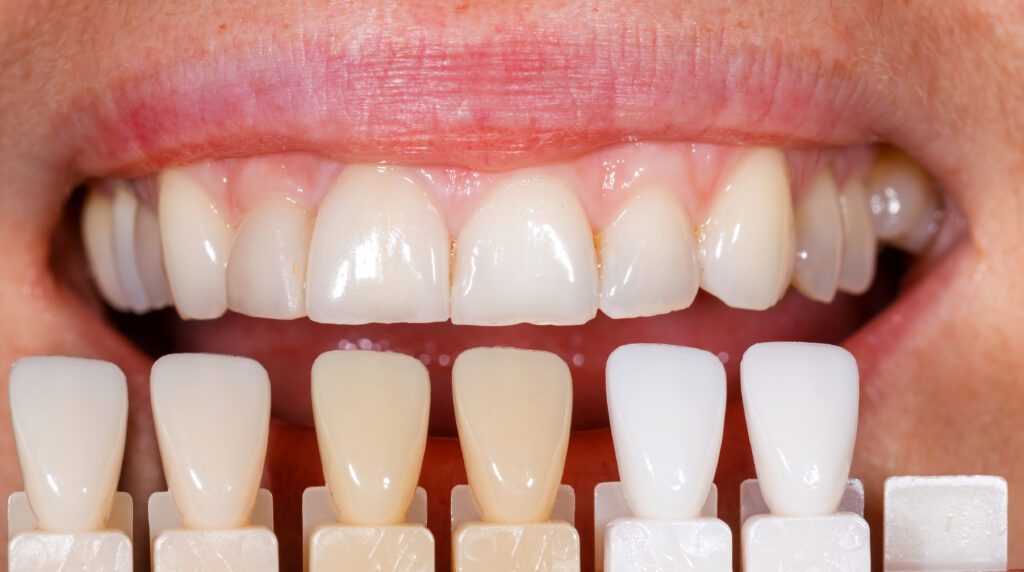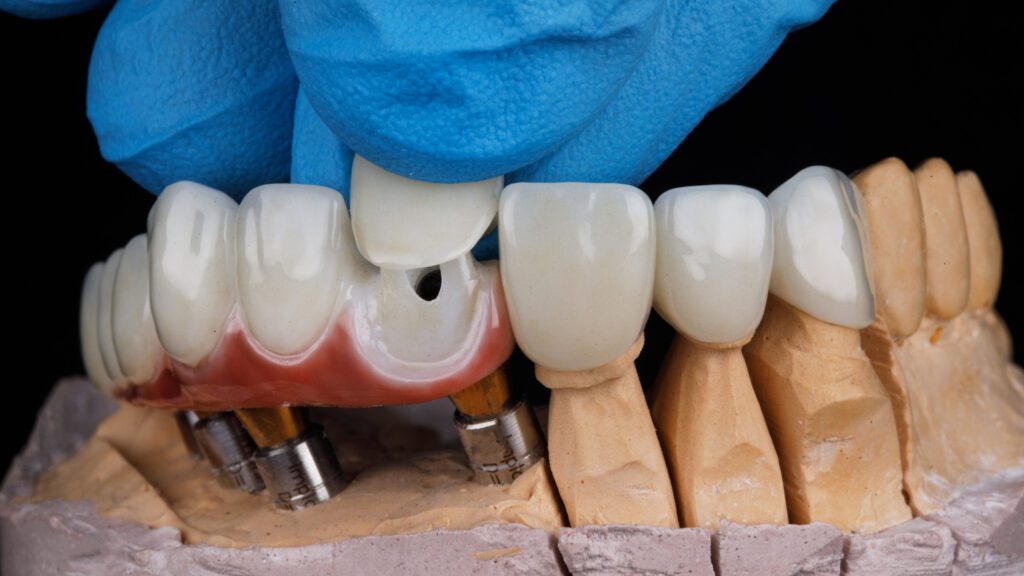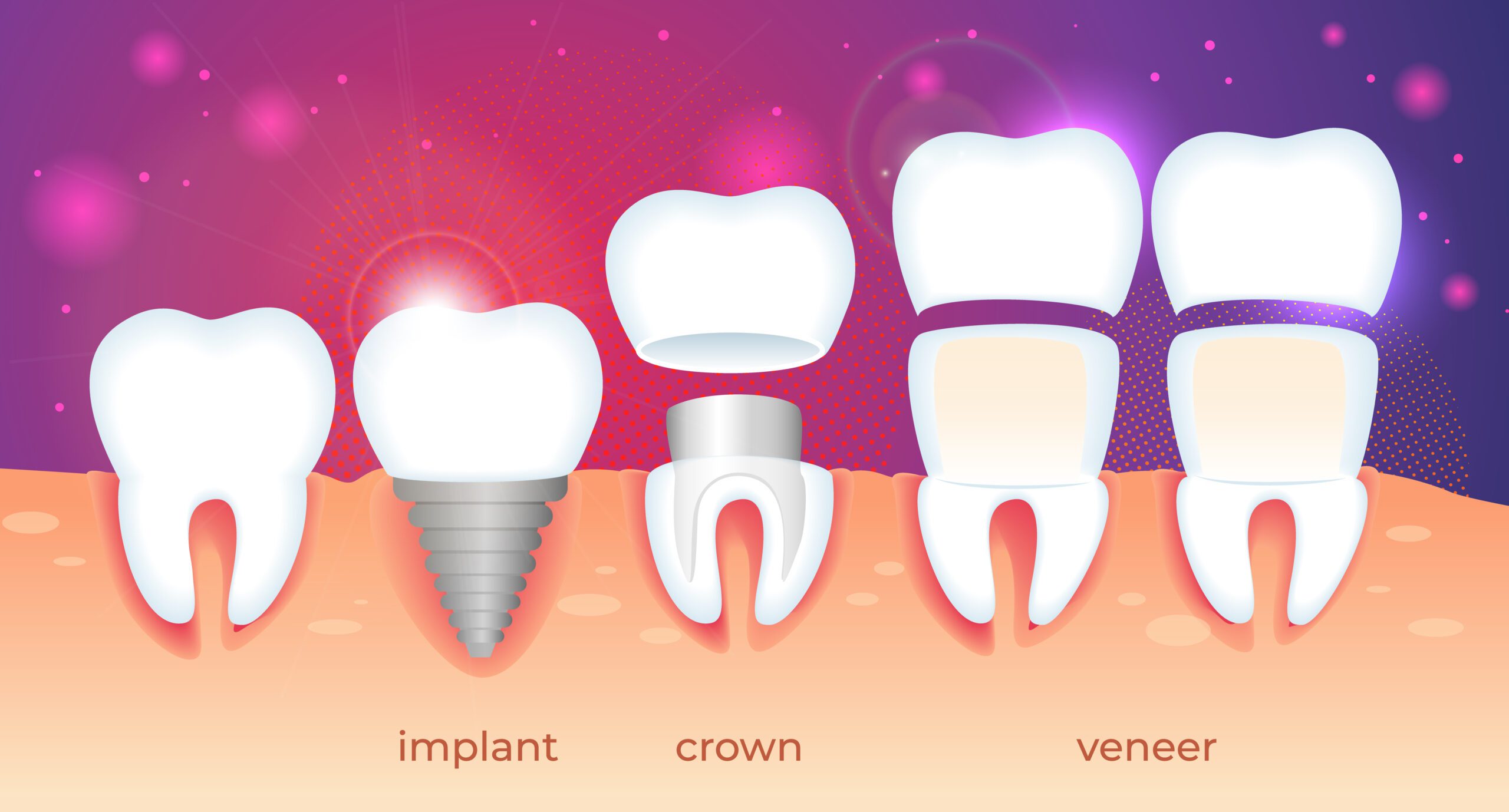At Patient Empowered Dentistry, we believe in the power of a great smile. It’s your greeting to the world, your confidence booster, and let’s face it, a fantastic smile is downright contagious!
Cosmetic dentistry can make a massive impact on your look and how you feel about yourself. Many dental plans cover treatment for restorative services, but veneers are typically considered cosmetic and may not be covered. However, many insurance companies offer discounts or coverage for porcelain veneers depending on your plan type—so don’t give up hope!
So, let’s talk about an option that can take your grin from good to dazzling – dental veneers.

What are Dental Veneers?
Imagine your teeth getting a mini makeover! That’s what dental veneers do. Whether you opt for temporary veneers, sometimes called snap-on veneers or permanent veneers, they are a fantastic option on the list of cosmetic procedures to improve your smile.
Veneers are ultra-thin shells, typically made from porcelain or resin, bonded to the front of your natural teeth. They can instantly transform your smile by covering up discolorations, chips, gaps, or crooked teeth.

Types of Veneers
Dental veneers aren’t a one-size-fits-all solution. Different types of dental veneers are available, and your dentist can help you decide which one is right for you.
Porcelain Veneers
Porcelain veneers are the most common type of veneers. These traditional veneers are made from a thin layer of custom-made porcelain to fit over your teeth.
Porcelain veneers are known for their durability and resistance to staining. They also have a natural look and feel, which makes them a popular choice for many patients. However, they require more preparation than other types of veneers, which can lead to more tooth structure being removed and a higher price point due to the custom fabrication process.
Composite Veneers
Composite veneers are another popular cosmetic dentistry option. Composite veneers are made from a tooth-colored composite resin filling material bonded to the tooth.
One of the main advantages of composite resin veneers is that they require less tooth structure to be removed than porcelain veneers. Composite veneers are also less expensive than some other cosmetic dentistry options. They can usually be applied with one dental procedure. However, they are less durable and do not resist stains, as well as porcelain veneers.
Lumineers
Lumineers are a type of porcelain veneer much thinner than traditional mouth veneers. Because of their thinness, they require less preparation and less removal of the natural tooth structure. This makes the procedure less invasive and sometimes reversible.
Lumineers are also known for their excellent translucency, giving the tooth a very natural appearance. However, because of this, they may not be suitable for everyone. Because you can see through the thin veneer, those with severely discolored, misshapen, or misaligned teeth may not be a good candidate for Lumineers.
Palatal Veneers
Palatal veneers, also known as occlusal veneers, are used on the inside surfaces of the upper teeth. They often treat tooth wear caused by grinding or clenching that other dental procedures would usually only temporarily fix.
Palatal veneers can be made from gold, composite resin, or porcelain. The choice of material depends on the specific needs and preferences of the patient.
No Prep Veneers
No-prep veneers don’t require the dentist to remove 1/2 millimeter of enamel off your tooth to make an impression. They are usually made from ultra-thin porcelain and can be applied directly to the tooth surface. With no-prep veneers, a digital impression of your teeth can be taken, and the veneers can be created and installed on the same day in some instances.
Non-prep veneers are a good option for those who want to improve their smile but are hesitant about removing tooth structure. However, not all patients are candidates for non-prep veneers. If you have severely misaligned or misshapen teeth, your dentist may recommend another type of veneer.
These veneers require less enamel removal due to their thinness, but they can be more fragile. They may not last as long as traditional porcelain veneers.
Temporary Veneers
Temporary veneers, also known as snap-on veneers or removable veneers, are a great option if you want to enhance your smile quickly. These veneers are custom-made for each person and come in various shapes, sizes, and colors.
They’re a perfect cosmetic treatment for those with slightly crooked teeth, yellow teeth, stained teeth, excessive visible gum tissue, or a minimal chipped tooth. They can be made from resin or plastic and attach to the front teeth with an adhesive.
While they are easy to apply to your existing teeth and can give you a beautiful smile quickly, they may not last as long as traditional porcelain veneers. They may also be uncomfortable to wear over broken teeth or gums with sores.

The Procedure
Getting veneers is a multi-step process that typically requires two to three visits to your dentist. First, during the consultation, your dentist will examine your teeth to ensure that veneers are the right choice for you. This visit may also involve taking X-rays or making impressions of your mouth and teeth.
Next comes the preparation. Your dentist will remove about half a millimeter of tooth enamel from the tooth surface, roughly equal to the thickness of the veneer to be added. Then, they’ll make a model or impression of your tooth, which is sent out to a dental lab where your veneer is custom-made. This process usually takes 1 to 2 weeks.
Finally, it’s bonding time. Your dentist will temporarily place the porcelain or composite veneers on your teeth to examine the fit and color before permanently cementing it in place. Once properly adjusted, your tooth will be cleaned, polished, and etched to roughen it up for a strong bonding process. A special cement is applied to the veneer, which is then placed on your tooth. Once positioned correctly, your dentist will use a special light beam that activates the cement, causing it to harden quickly.
The final steps involve removing excess cement, checking your bite, and making necessary adjustments. Your dentist may ask you to return for a follow-up visit to check how your gums are responding to the presence of your dental veneers.

Maintaining Your Veneers
All types of veneers require the same care as natural teeth. Brushing twice daily, flossing daily, and rinsing with an antiseptic mouthwash are all part of maintaining your veneers.
You should also regularly visit your dentist for check-ups and professional cleanings. Although veneers are stain-resistant, your dentist may still recommend avoiding stain-causing foods and drinks like coffee, tea, red wine, and tobacco.

The Price Tag: How Much Do Veneers Cost?
Now, let’s talk dollars and cents. The cost of veneers varies based on several factors, including the material used, the complexity of the procedure, and the number of veneers you need.
How Much Do Porcelain Veneers Cost with Dental Insurance?
Porcelain veneers can range from $925 to $2,500 per tooth. If you’re thinking, “That’s a bit steep!” don’t worry; we’ve got some good news for you. Insurance companies typically cover up to 50% of the cost of traditional porcelain veneers if deemed medically necessary. If you have insurance, it could make a massive dent in your overall costs.
How Much Do Composite Veneers Cost with Dental Insurance?
Composite veneers are usually more affordable than porcelain veneers, costing an average of $250 to $1500 per tooth. Insurance companies typically cover 50% of composite veneers when deemed medically necessary. If you have coverage, you could receive a nice discount on the total cost of treatment.
How Much Do Lumineers Cost with Dental Insurance?
Lumineers are a type of no-prep veneer that range from $800 to $2000 per tooth. Insurance may cover them if deemed medically necessary but remember that most policies won’t cover the total cost.
How Much Do Palatal Veneers Cost with Dental Insurance?
Palatal veneers are a type of dental prosthetic placed on the roof of your mouth. They range in cost from $600 to $1,500 per tooth, and insurance companies typically cover up to 50% of the price if they are deemed medically necessary.
How Much Do No Prep Veneers Cost with Dental Insurance?
Also known as prep less veneers, they cost $850 to $2,000 per tooth. Your insurance company may cover up to 50% of the cost of non-prep veneers when medically necessary.
How Much Do Temporary Veneers Cost with Dental Insurance?
Removable veneers, or snap-on veneers, range from $500 to $3,000 per arch. Insurance policies typically won’t cover removable veneers since they are considered purely cosmetic.
For those considering a complete set of veneers (typically covering 16 to 20 teeth), costs can range from $5,000 to $20,000. But if that number has you seeing stars, don’t lose hope. There are financing options available to help make this investment more manageable.

The Insurance Factor: Does Dental Insurance Cover Veneers?
The million-dollar question is – are dental veneers covered by dental insurance providers? The answer is that it depends.
Some insurance companies consider veneers a cosmetic procedure, meaning they may not be covered. However, if your dentist can demonstrate that the veneers are necessary for structural reasons or to improve oral health, your insurance company may foot part of the bill.
We recommend contacting your insurance provider to understand your coverage better. Remember, every policy is different, so knowing what yours includes is crucial.

What Other Options Can Help Pay for Cosmetic Dental Procedures?
If your insurance provider doesn’t cover veneers, or if you’re looking for additional ways to pay for them, financing options are available to help with your mouth veneers cost.
Many dentists offer in-house financing and dental savings plans that allow you to spread out the cost of cosmetic procedures over several months. You can also apply for outside financing from banks and credit unions. Some even specialize in financing dental procedures, so you can get the smile of your dreams without breaking the bank.

Are Veneers Worth It?
Here’s another question we often hear – are veneers worth it? While the initial cost may seem high, consider the benefits. Veneers can dramatically improve the appearance of your smile, boosting your self-esteem and making you feel more confident in social and professional settings. Plus, they’re incredibly durable and stain-resistant, keeping your smile brighter for longer.
While veneers can’t solve all dental issues, they’re fantastic for minor chips, discoloration, and gaps. So, if you’re dreaming of a Hollywood smile, veneers might be your golden ticket!

Veneers: A Long-Term Investment in Your Smile
While the cost of veneers can seem high initially, remember that it’s a long-term investment in your smile. With proper dental care, veneers can last seven to 15 years or longer. Plus, the confidence and joy that comes from having a beautiful smile? That’s priceless.
At Patient Empowered Dentistry, we believe everyone deserves a smile they’re proud to show off. We’re here to guide you through every step, from the initial consultation to the final reveal of your dazzling new smile. So why wait? Call us today and start your journey to a more confident, radiant smile today!



